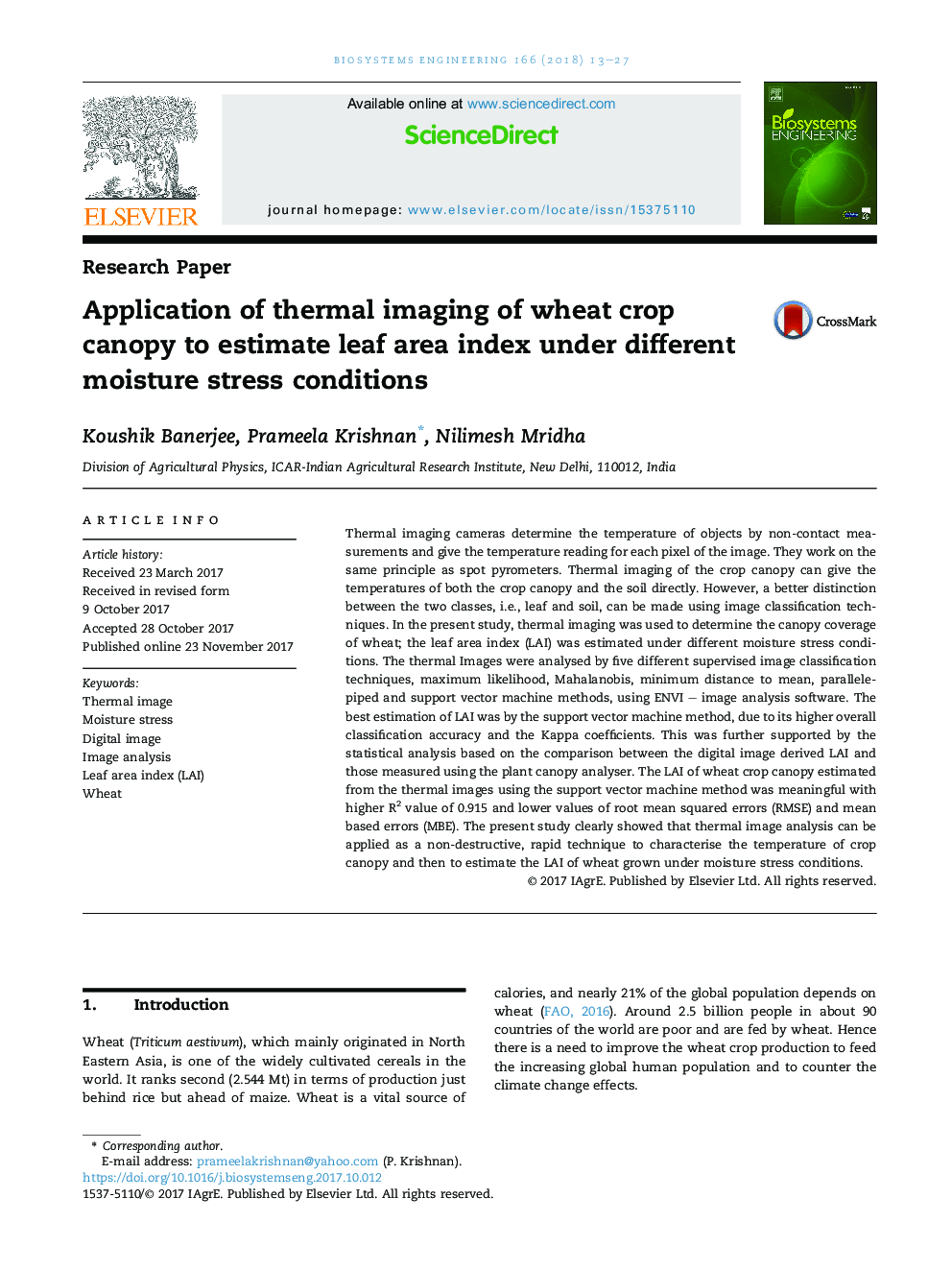| Article ID | Journal | Published Year | Pages | File Type |
|---|---|---|---|---|
| 8054823 | Biosystems Engineering | 2018 | 15 Pages |
Abstract
Thermal imaging cameras determine the temperature of objects by non-contact measurements and give the temperature reading for each pixel of the image. They work on the same principle as spot pyrometers. Thermal imaging of the crop canopy can give the temperatures of both the crop canopy and the soil directly. However, a better distinction between the two classes, i.e., leaf and soil, can be made using image classification techniques. In the present study, thermal imaging was used to determine the canopy coverage of wheat; the leaf area index (LAI) was estimated under different moisture stress conditions. The thermal Images were analysed by five different supervised image classification techniques, maximum likelihood, Mahalanobis, minimum distance to mean, parallelepiped and support vector machine methods, using ENVI - image analysis software. The best estimation of LAI was by the support vector machine method, due to its higher overall classification accuracy and the Kappa coefficients. This was further supported by the statistical analysis based on the comparison between the digital image derived LAI and those measured using the plant canopy analyser. The LAI of wheat crop canopy estimated from the thermal images using the support vector machine method was meaningful with higher R2 value of 0.915 and lower values of root mean squared errors (RMSE) and mean based errors (MBE). The present study clearly showed that thermal image analysis can be applied as a non-destructive, rapid technique to characterise the temperature of crop canopy and then to estimate the LAI of wheat grown under moisture stress conditions.
Related Topics
Physical Sciences and Engineering
Engineering
Control and Systems Engineering
Authors
Koushik Banerjee, Prameela Krishnan, Nilimesh Mridha,
